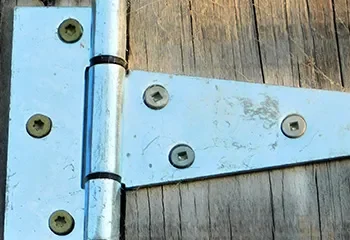Who We Are and Why We Care
I’m someone who’s spent years noticing how dampness can sneak in and cause trouble. You might be wondering if it’s that big a deal. Well, I’ve seen walls go green with mould, floors buckle, and families fretting over health issues. As a writer who chats with surveyors and homeowners alike, I’ve learned that calling in damp proofing experts isn’t just a tagline—it can save you stress and cash. In this piece, I share what I know in plain words. No jargon. No fluff. Just an honest chat about why dampness happens, how you spot it early, and what to do next. Let’s keep it simple because let’s be honest—you’d rather sleep easy than worry about hidden leaks or creeping dampness.
What You Need to Know and Do
Spotting the Signs Early
You know how you might sniff a musty smell in a room and think, “Hmm, that’s odd”? That can be the first hint. Or you notice paint bubbling or wallpaper peeling. Maybe the skirting board feels damp or crumbles slightly when you tap it. These clues tell you moisture is at work. Don’t brush them off. Damp can hide. You might see a tiny patch one day and, years later, face a bigger job. Acting early is key.
Why Bring in the Experts?
Could you try a quick DIY patch? Sure, but is that enough? Probably not. A quick fix might hide the real cause. I’ve been there: slapped on a sealant, then found the leak returned worse later. Experts look deeper. They trace the source: rising dampness, penetrating dampness, and poor ventilation. They use tools and know local building quirks. That know-how feels worth it when you avoid repeat visits. You gain peace of mind. And yes, it can save money long term. Fixing the root cause means you’re not pouring cash into repeated band-aids.
What to Expect from a Survey
You call a pro. They visit and carry out a survey. They might tap walls, check ground levels, inspect drains, and gauge humidity. It’s not rocket science, but it does need a trained eye. I’ve heard some say surveys feel thorough but not scary. They talk you through the findings. You learn if you need membranes, improved drainage, ventilation tweaks, or a full damp-proof course. The report often lists options with rough costs. You then decide what suits your budget and urgency.
Common Treatments, Explained Simply
- Damp-proof course: A barrier in the wall to stop rising moisture. Think of it like putting a waterproof layer at the foundation level.
- Tanking or membranes: For basements or cellars. A liner inside walls to block water ingress.
- Improved ventilation: Sometimes dampness is just trapped air. Better airflow cuts condensation.
- External works: Fixing gutters, downpipes, or repointing bricks. Preventing rainwater from reaching walls.
- Internal finishes: Breathing plaster or mould-resistant paint. These help but don’t replace fixing the cause.
You might ask: “Do I need all of these?” Not always. The survey guides you. It can feel a bit much, but it’s like a health check for your home.
Balancing DIY and Professional Help
I get it: DIY feels tempting. You watch a quick video and grab some sealant. That might work for tiny cracks. But if you sense dampness deeper down, call a pro. You’ll feel less anxious knowing the fix is right. If the budget’s tight, you could tackle small steps—clear gutters, boost ventilation with window vents—but still plan a survey soon. Don’t let small savings now lead to bigger bills later.
Realistic Costs and Timing
Damp work can range from modest to significant sums, depending on cause and size. I’ve chatted with homeowners who budgeted more than they planned once they saw the whole picture. Better to set aside a small contingency. Timing matters too: avoid the wettest months for external work if possible. But if health is at risk (mould triggers asthma, for example), act sooner rather than later. I know it can feel like juggling priorities—family, work, expenses—but a dry home pays off in comfort and avoids resale hitches.
Practical Tips Before the Pro Arrives
- Clear clutter near affected walls so the surveyor can inspect properly.
- Note when you see damp—after heavy rain? Winter only? Jot dates.
- List past issues: any floods, leaks, or DIY fixes tried.
- Ask neighbours: do they have similar issues? Patterns can hint at wider drainage problems.
- Keep pets and kids safe during work: some treatments need drying time or restrict access.
These simple steps help the expert work faster. And you feel involved, not lost.
How We Can Help If You Choose to Engage Further
I’ve shared what I’ve learned. Now, you might wonder: “What’s next?” If you’re serious about a dry, healthy home, start by booking a survey with a local specialist. You’ll get tailored advice and clear options. If the budget’s tight, see if you can phase work: tackle urgent spots first, then plan longer-term fixes. Keep asking questions. A good expert explains in plain words. Don’t settle for jargon-filled quotes. If you choose to work with us (or whoever you trust), expect clear steps, honest costs, and ongoing support. Your home deserves that care.
Compelling CTA
Ready to put damp concerns behind you? Reach out to a trusted local surveyor today. Let’s get that survey booked, find the actual cause, and plan a fix you feel good about. A dry home isn’t just nicer—it’s healthier and more valuable. Don’t wait until small patches become stubborn issues. Act now and enjoy peace of mind.












